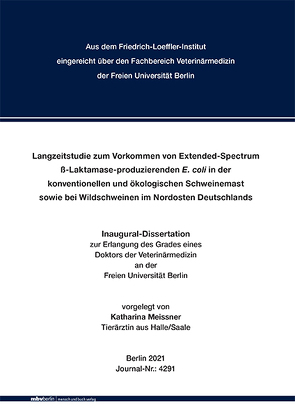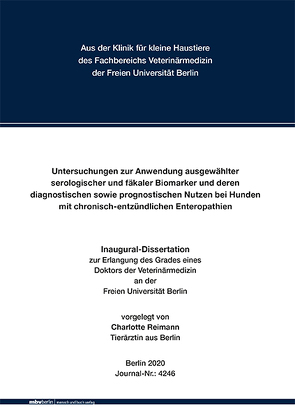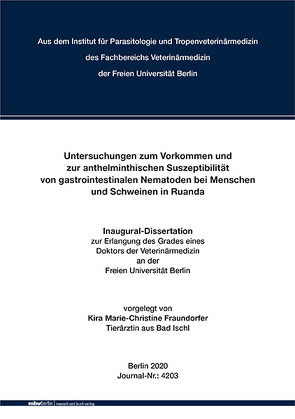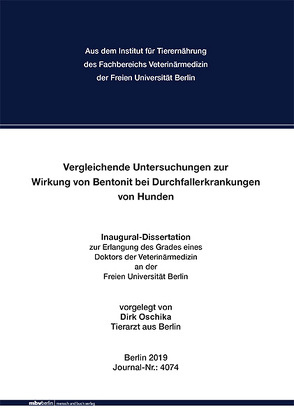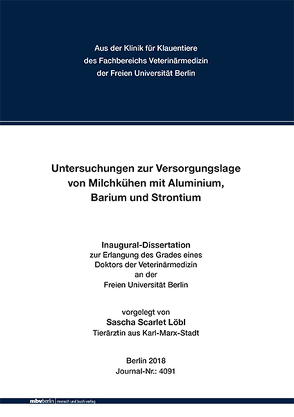Evaluation of the aluminum, barium and strontium status in dairy cows
Aluminum, barium and strontium are accidental trace elements. They have no physiological meaning for cattle. In contrast to essential trace elements, they are neither necessary for accretion and milk production nor for preserving health. However, forage (food) contains them. Therefore, they are absorbed and metabolized along other nutrients. There is no deficiency syndrome described for accidental trace elements. However, there are intoxications depicted for humans. Similar to essential trace elements, aluminum, barium and strontium posses metabolic cycles and mass balances. For these elements there is only little published regarding cattle, 90Sr* being one exception. No cattle reference values are described for aluminum, barium and strontium. The data of this work is useful for further evaluations.
There are the following foci in this thesis:
(1) Descriptive data analysis of the aluminum, barium and strontium concentrations in serum, plasma, whole blood, urine, hair and feces
(2) Comparison of the element concentrations in different sample media
(3) Evaluation of the influence of lactation status, season (quarter), year of investigation and German state on the element concentrations
(4) Creation of reference values
(5) Comparison of concentration ratios in various sample media from accidental and essential trace elements including sulfur
The analyzed samples derive from the herd management of the Klinik für Klauentiere, Freie Universität Berlin. Therefore, randomized dairy cow herds from the newly-formed German states were chosen. Samples are pooled with a target pool size of n = 10. The pool value correspondents to the average derived from the analysis values for each single dairy cow. Each clinically healthy and multipara dairy cow is randomly chosen. They are grouped regarding lactation status (3 - 0 weeks ante partum, 0 - 1 week, 3 - 5 weeks, 15 - 18 weeks post partum; for herds < 200 cows there are different groups: 3 - 0 weeks ante partum, 0 - 5 weeks, 6 - 20 weeks post partum). 1574 serum pool samples, 1571 plasma pool samples, 1550 whole blood samples, 2019 urine pool samples, 693 hair pool samples and 79 feces pool samples were analyzed by ICP-OES (IDEXX VetMed Labor Ludwigsburg). The intra-day coefficient of variation for the concentration of the three elements in various sample media ranged from 0.7 % to 13.5 %. The inter-day coefficient of variation ranged from 0.6 % to 19.2 %. The same samples were analyzed before regarding copper, iron, zinc, selenium, manganese, molybdenum and sulfur concentrations. These analyses are part of the previously established herd management database. In this thesis they were used for the comparison of the aluminum, barium and strontium concentrations with the concentrations of essential trace elements. The statistical analyses was performed by SPSS 24 (SPSS, IBM, USA). They contain the comparison of averages by t-test for paired samples and performing of ANOVA post-hoc tests for evaluation of the effect from lactation status, year of investigation, season and German state. Furthermore, rank correlation analyses were conducted. Subsequently, reference values were estimated based on the 2.5 percentile and on the 97.5 percentile.
Aluminum, barium and strontium concentrations vary strongly in various sample media (Al serum 0 - 119 μg/l, plasma 0 - 250 μg/l, urine 0 - 148 μg/l, hair 0 - 8207 μg/kg, feces 94 - 1694 mg/kg TM; Ba serum 3.4 - 48 μg/l, plasma 11 - 95 μg/l, whole blood 7.7 - 46 μg/l, urine 22 - 642 μg/l, hair 0 - 34 mg/kg, feces 24 - 93 mg/kg TM, Sr serum 37 - 306 μg/l, plasma 38 - 333 μg/l, whole blood 28 - 245 μg/l, urine 73 - 3080 μg/l, hair 0 - 29 mg/kg, feces 48 - 236 mg/kg TM). The methodology for the determination of the aluminum concentration in whole blood seems unclear. Therefore, this concentration is not suggested for further application. The factors lactation status, season (quarter), year of investigation and German state may influence significantly the results. Nevertheless, quantitative differences are only minor. Therefore, the use of uniform reference values is suitable.
The analysis of concentration ratios in various sample media shows pronounced distribution differences for the accidental trace elements aluminum, barium and strontium in comparison to the essential trace elements and sulfur. Molybdenum behaves like an accidental trace element in accordance to its physiology. In conclusion, the absorption of the investigated accidental trace elements is probably passive and only minor. For avoiding intoxications absorbed aluminum, barium and strontium will be strongly eliminated by the kidneys.
Clinical diagnostics of the nutritive supply status for essential and accidental trace elements is performable by the evaluation of the concentration in each forage or in the total mixed feed ration (TMR). Furthermore, the analysis of feces is suitable. The analysis of the metabolic supply status for accidental trace elements is different to the one for essential trace elements since in case of accidental trace elements only intoxications are important. Therefore, the analysis of urine samples is most suitable. Additionally, the analysis of blood samples is suitable for the determination of intoxications since there is also a high aluminum, barium and strontium concentration increase.
